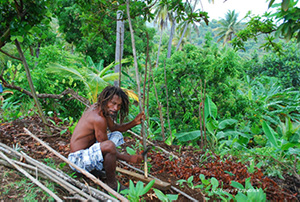Secrets of Ancient Olympia

Ancient Olympia's famed stadium, where spectators watched from grassy earthen banks. Photo by June Russell Chamberlin
Posted March 9, 2025
The next time you watch the extravaganza that is the modern Olympic Games, consider this: It all started with a simple footrace.
To history lovers like me, the Sanctuary of Olympia — the religious site used for the ancient competitions — is almost as legendary as the games. The archaeological site of ancient Olympia is rich with history and littered with intriguing ruins, making it an irresistible stop on my road trip around the Peloponnese Peninsula. To add to the fun, ancient Olympia’s history reads like a Hollywood script — full of drama, parties, and even one of the Seven Wonders of the Ancient World. Even in its ruined state, the site inspires awe.
History of the Games
Before my visit, I knew little about the ancient Olympic Games, aside from the fact that they were held every four years and the athletes competed naked. I’d seen images from the games on vases and other ceramics in Athens. The details, though, were fuzzy, so I did a little homework.
The first recorded Olympic Games were held in 776 BC with a single event: a footrace of 600 feet. Gradually, the games added additional events. By the fourth century BCE, the Olympics drew an estimated 40,000 Greek spectators.
The games were a sporting event, but they were also a religious festival honoring Zeus, king of the gods. As the number of spectators grew, the festival became a massive party. All those spectators needed food and entertainment, as well as sundries and souvenirs. Merchants, food vendors, artisans, poets, orators, and philosophers served the crowds. Victors gave thanks to Zeus, and on the third day of the five-day event, 100 oxen were sacrificed on his altar. Sports, plus barbecue? To me, it sounded like the ancient Greek version of a week-long tailgate party.
The fun and games ended in 393 AD, after a thousand years of friendly naked competition. It would be 1,503 years before athletes — fully clothed — gathered for the Olympic Games again.
The Sacred Way
My sister Julie and I walked down the hill along the Sacred Way to the excavated archaeological site. The hill provides a clue to the site’s past.
For perhaps a thousand years, the location of the sanctuary and the most illustrious competition in ancient Greece remained a mystery. The birthplace of the Olympics, with its temples and stadium, had vanished.
The site remained lost until British traveler Richard Chandler went looking for it in 1766. He found it near the confluence of the Alpheios and Kladeos Rivers, right where ancient texts said it would be. The sanctuary lay buried beneath up to 25 feet of silt deposited by the flooding of the two rivers.

The boardwalk leading to the the ruins of Emperor Neros luxurious villa. Photo by June Russell Chamberlin
The Gymnasium, Palaestra, and Philippeon
Some of the first buildings we visited were the Gymnasium and Palaestra, both training areas for the athletes. Columned porticoes surrounded these buildings.Some of the Palaestra’s 72 Doric columns have been set upright again.
On the opposite side of the path stands one of the site’s most photogenic buildings: the Philippeon, a circular building with three graceful columns still standing.
At the bottom of the hill, the path begins a loop through the archaeological site. The center square is filled with olive, oak, and pine trees; the remains of monuments; and the famous Temple of Zeus. Many tour groups gathered in the shade, listening as their guides explained the history of the games.
We eavesdropped a bit, then moved on to the monumental Heraion, or Temple of Hera. The raised foundation, wider columns, and larger blocks indicated the temple’s grandeur and importance. During the games, the Heraion held olive-branch crowns for the victors and the bronze disc engraved with the sacred truce.
Nymphaion, Metroon, and Treasuries
We passed several building in quick succession between the Heraion and the stadium. Little remains of the Nymphaion, an elaborate semi-circular fountain that provided water to the site. Likewise, the Metroon, a temple dedicated to the mother of the gods, still has its stone foundation, but not much else. Behind the Metroon the scant foundations of nearly a dozen small Treasury buildings remain, each promoting a city-state and providing a safe place to keep valuables.
The Stadium in Ancient Olympia
As we approached the stadium, tour groups clogged the arched entrance tunnel. We decided to go around the tunnel, up a footpath to the top of the grassy embankment that served as seating for spectators. From there, we had a view of the entire stadium and the antics of our fellow tourists. Under their guide’s direction, one group took turns lining up at the stone starting line and sprinting a few yards.

Visitors enter the stadium as the ancient Olympic athletes once did, through a vaulted passageway. Photo by June Russell Chamberlin
Echo Stoa, Nero’s Villa, and the Bouleuterion
Back outside, we followed the main path along the west wall of the stadium where the Echo Stoa, also known as the East Stoa, once stood. The information sign in front of the stoa suggested that its location just outside the stadium made it the perfect place for concession stands and souvenir shops.
We explored the other buildings at the archaeological site, including the remains of Nero’s luxurious villa and the foundations of the Bouleterion, the administrative center for the games. Nothing, though, could compete with the Temple of Zeus.
The Temple of Zeus
Designed to impress, The Temple of Zeus retains its splendor, even in its ruined state. The foundation stones raise the temple nearly five feet off the ground. Columns up to seven feet in diameter lay on their sides where they fell, the individual drums tipped in a row like a toppled stack of coins. Every aspect of the temple — the limestone blocks, the foundation, the columns — is immense.
The temple once held Greek sculptor Phidias’s masterpiece, a 40-foot-high wooden statue of Zeus on a throne covered in ebony and precious gems. The god’s skin was crafted of ivory, his robes made of gold. Set in a building that inspired awe, Zeus must have towered over worshipers, gleaming in the lamplight. The enormous glittering statue became known as one of the Seven Wonders of the Ancient World.

Fluted slices of columns, some more than 7 feet in diameter, lay where they fell from the Temple of Zeus. Photo by June Russell Chamberlin
The Archaeological Museum
Next, we explored the cooler halls of the Archaeological Museum of Olympia. The museum houses some of the treasures discovered at the site. Bronze helmets, bits of rusted armor, statues, vases, architectural remnants, tripod decorations, and whatever else the archaeologists dug up are displayed and explained in English and Greek.
Later that afternoon, I walked through town to the Museum of the History of the Olympic Games. The ticket to the archaeological site grants entry to both museums. The history museum details the competitive events and tells stories from the games. Together, the two museums provide a comprehensive picture of the ancient Olympic Games.
Of all the ruins we visited, the Sanctuary of Olympia, home of the ancient Olympic Games, was easily our favorite. It’s not difficult to imagine the throngs of people, the roar of the crowd, the smoke in the air, and the festive atmosphere filling the tree-shaded space. I’ll never look at the Olympic Games quite the same way again.
Click here for discounted accommodations in Peloponnese, Greece
Join the community!

Join our community to receive special updates (we keep your private info locked.)




